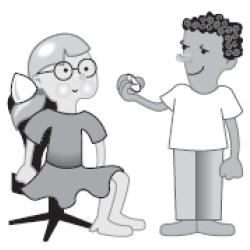Source Institutions
Source Institutions
Add to list Go to activity
Activity link broken? See if it's at the internet archive

In this activity (on page 142 of the PDF), learners will compare breathing rates before and after hyperventilation to explore how reduced carbon dioxide levels in the blood lower the need to breathe. This activity also includes information about how microgravity conditions in space affect sleep and breathing rates of astronauts. This activity can be enhanced by sharing the "Astronaut's Sleep" Podcast with learners (see related resource link). This resource guide includes background information and sample evaluation questions. Note: learners with respiratory ailments, such as asthma or allergies, should not participate in the breath-holding part of this activity.
- Under 5 minutes
- 45 to 60 minutes
- 1 cent - $1 per group of students
- Ages 8 - 18
- Activity, Experiment/Lab Activity, Lesson/Lesson Plan
- English
Quick Guide
Materials List (per group of students)
- Watch or access to a clock with a second hand
- Chair
- Pen or pencil
- Note pad
Subjects
-
Life Sciences
- Cells
-
Human Body
- The Brain and Nervous System
- Circulation
- Health and Nutrition
- Respiration
-
Physical Sciences
- Chemistry
-
Motion and Forces
- Gravity
-
Mathematics
-
Algebra
- Patterns
-
Data Analysis and Probability
- Data Analysis
- Data Collection
- Data Representation
-
Measurement
- Rate
- Reasoning and Proof
- Representation
-
Algebra
-
The Nature of Science
-
The Scientific Process
- Conducting Investigations
- Gathering Data
- Formulating Explanations
- Communicating Results
-
The Scientific Process
Audience
To use this activity, learners need to:
- see
- read
- touch
Learning styles supported:
- Involves teamwork and communication skills
- Involves hands-on or lab activities
Other
Includes alignment to state and/or national standards:
Access Rights:
- Free access
By:
- MacLeish, Marlene Y. ; McLean, Bernice R.
Rights:
- Public domain, NASA,
